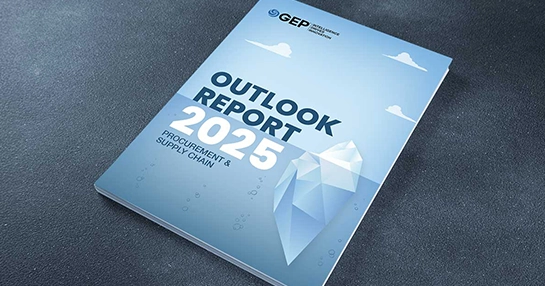
Create a Winning Procurement Category Management Strategy with Agentic AI
- Agentic AI bridges the gap between strategy and execution, turning procurement from reactive to proactive.
- The real advantage isn’t replacing people, it's freeing them from manual work to focus on strategic impact.
- Start small, prove value in one category, then scale to unlock resilience, innovation, and alignment.
October 15, 2025 | Procurement Strategy 5 minutes read
Let’s be honest: procurement category management has never been simple. On paper, it looks neat: define your categories, analyze spend, map suppliers, manage risks, and set a strategy. In practice, it often looks like a patchwork of systems and endless meetings where the data you’re working with is already outdated.
And yet, category management is one of the most important levers a business has. It’s how you align procurement with strategy, protect against risk, and make sure suppliers aren’t just delivering products, but value. The trouble is, the way most teams do it hasn’t really caught up to the complexity of today’s world.
That’s where Agentic AI comes in. Not as another flashy tool, but as a different way of working. It’s AI that doesn’t just sit in the background spitting out reports. It acts. It recommends. It orchestrates. It takes on the repetitive stuff and gives procurement professionals the space to focus on the high-value, human side of the job.
Unlock Smarter Procurement with Agentic AI
Transform category management with AI-driven insights
Understanding Procurement Category Management
At its core, category management is about thinking strategically. Instead of treating procurement as a series of one-off transactions, you treat categories like IT, logistics, or raw materials as mini-business units. Each has its own cost drivers, supplier dynamics, and risks.
Done well, category management means you’re not just buying smarter. You’re aligning procurement with business priorities. That could be lowering costs, building resilience, or advancing sustainability goals.
The challenge? Most organizations get stuck in execution. They know what they want to achieve but spend too much time reconciling messy data, trying to get a complete view of suppliers, or chasing market signals they can’t quite keep up with. That gap between strategy and execution is exactly where agentic AI makes a difference.
The Building Blocks of a Great Strategy (Supercharged by AI)
If you strip category management down to its essentials, there are a few things every strategy needs. Agentic AI strengthens each one:
Clear objectives
Instead of static goals on a slide deck, AI helps you track and update objectives dynamically. Think of it as a compass that constantly recalibrates with real-time data.
Market awareness
The market doesn’t wait for your quarterly review. AI agents continuously scan news, prices, supplier updates, and risks so you’re never blindsided.
Spend visibility
Instead of drowning in fragmented reports, AI cleans and consolidates data to give you a real-time picture of where the money’s going.
Supplier mapping
It’s not enough to know who your suppliers are—you need to know their health, performance, and potential. AI automates this analysis and even surfaces non-traditional suppliers you might have missed.
Risk assessment
Supply chain disruptions, regulatory changes, reputational risks—AI models these dynamically so you see what’s coming before it hits.
Execution roadmap
The best strategy is useless if it just sits in a binder. AI helps orchestrate execution: nudging stakeholders, tracking progress, and escalating when needed.
Ready to leverage agentic AI in procurement?
Get The Agentic AI Playbook to see how leaders are moving from automation to autonomy
Why Traditional Approaches Fall Short
If you’ve ever been frustrated by a category strategy that looked great in theory but fizzled in execution, you’re not alone. There are three big reasons this happens:
1. Chasing perfect data
Teams spend months trying to reconcile every line item. By the time they’re done, the market has already changed. Speed matters more than perfection, and AI thrives on speed.
2. Technology-first thinking
Too often, tools get rolled out without focusing on how they actually support decision-making. AI flips this: the point isn’t more dashboards, it’s better decisions.
3. Integration theater
Legacy systems often look “integrated” on the surface but don’t truly share intelligence. AI doesn’t just connect systems; it orchestrates insights across workflows where people actually need them.
A Practical Roadmap (That Actually Works)
So how do you build a category strategy that doesn’t just look good on paper but works in the real world? Here’s a step-by-step path where AI plays a central role:
Step | Action | How AI Helps |
|---|---|---|
| 1. Define your category scope | Be clear on what’s in and out. | AI analyzes spend patterns to suggest logical boundaries. |
| 2. Analyze historical spend | Look beyond totals to understand patterns. | AI finds anomalies, trends, and hidden savings opportunities. |
| 3. Map the supplier landscape | Identify not just direct suppliers, but broader ecosystem. | AI continuously updates supplier risks, innovations, and opportunities. |
| 4. Assess risks and opportunities | Make this an ongoing process, not annual. | AI adjusts risk/opportunity assessment as markets shift. |
| 5. Set strategic objectives | Align with priorities like cost, sustainability, resilience. | AI monitors progress toward objectives in real time. |
| 6. Develop sourcing strategies | Design sourcing events and optimize supplier portfolios. | AI provides insights to negotiate smarter and shape strategies. |
| 7. Plan execution | Orchestrate actions and stakeholder alignment. | AI tracks milestones, flags issues, and nudges stakeholders. |
The smartest way to roll this out? Start small. Pick a pilot category, test, learn, and scale. That’s how you build confidence and prove value without overwhelming the organization.
What Makes This Shift Different
The big question we often hear: does this mean AI will replace category managers? Honestly, no. It’s not about replacing people—it’s about transforming their roles within procurement. AI takes over the repetitive, manual, and data-heavy tasks so people can focus on the parts of procurement that require creativity, empathy, and judgment: negotiating with suppliers, managing stakeholders, shaping strategy.
The organizations that adopt agentic AI in procurement now won’t just be more efficient. They’ll be more resilient, more innovative, and better aligned with the business. The ones that don’t? They risk getting stuck in reactive mode while competitors move ahead.
Discover More: Contract Management Software Solutions
Getting Started
Procurement is at a crossroads. The old way—manual processes, siloed data, static strategies—can’t keep up with today’s pace of change. The new way—driven by agentic AI—means procurement can finally operate as a proactive, strategic partner to the business.
If there’s one takeaway, it’s this: don’t wait for perfect conditions. Start with one category. See how agentic AI shifts the workload, sharpens decisions, and accelerates execution. Then scale.
Because the real risk isn’t trying something new. It’s sticking with the old ways while everyone else moves forward.



